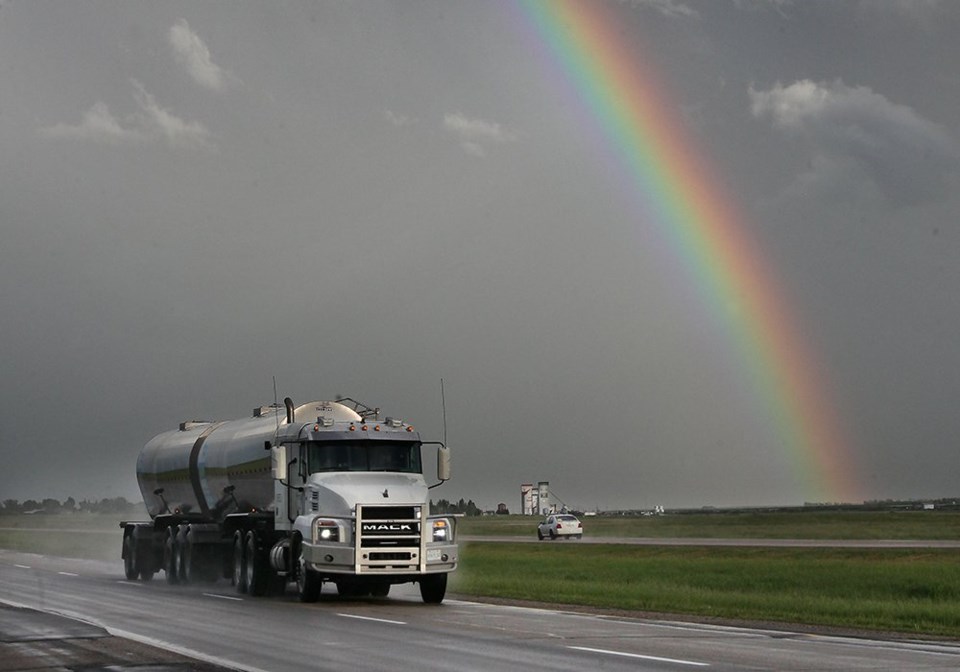WESTERN PRODUCER — Eric Snodgrass has a feeling there will be lots of crop comparison photos on the Canadian Prairies at the end of this year’s growing season.
“We’re going to see pictures side-by-side of 2021 versus 2022 and it’s going to be a stark difference for some folks,” said the senior science fellow at Nutrien Ag Solutions.
The contrast is due to a ridge of high pressure established in the Midwest region of the United States.
That ridge is pushing the Pacific jet stream north along a path that runs from Spokane, Washington, up to Saskatoon and then back down to London, Ont.
Low-pressure weather systems are following that same trajectory, delivering much-needed moisture to previously parched regions of Alberta and Saskatchewan.
“We had a few systems that just dropped tremendous amounts of moisture,” said Snodgrass.
“If we end up keeping the ridge where it is, the Canadian Prairies will see an active storm track. The lows just roll across the top.”
A summer La Nina is one of the main reasons the ridge set up where it did. La Nina is likely to stick around in July and August. In fact, there is a 60 percent chance it will remain in place through the fall.
Last year was the driest summer on the Canadian Prairies since 1979. This year is setting up for a wet one.
DTN agricultural meteorologist John Baranick said the rains have been welcomed in most regions except the waterlogged areas of the eastern Prairies where farmers had trouble putting a crop in the ground.
“The drought we had last year is almost gone honestly,” he said.
Baranick believes the next Canadian Drought Monitor report due to be released July 6 or 7 will contain precious little yellow, brown and red ink, which indicate various levels of drought.
However, he is forecasting that the rains will slow down and temperatures will turn hotter than usual for the remainder of summer, although a far cry from the scorcher forecast for the U.S. Midwest.
“Even if we get some higher temperatures here the outlook is pretty good,” he said.
MarketsFarm analyst Bruce Burnett disagrees with part of Baranick’s assessment.
“We haven’t cured the drought,” he said.
“That would take a lot more moisture than what has fallen.”
Trevor Hadwen, agroclimate specialist with Agriculture Canada, said the early assessment is that the June Drought Monitor report will show improvement from the previous month but he agrees with Burnett that the drought won’t be alleviated.
“I would anticipate that large regions of moderate to severe drought will remain in the western Prairies,” he said in an email.
Burnett said drought-stricken areas of western Saskatchewan and central and southern Alberta are going to need 25 to 38 millimetres of rain every couple of weeks throughout the summer to make up for the huge early-season moisture deficit.
He expects normal to above-normal temperatures for the first half of July. There is probably enough moisture to sustain the crop through that hot spell.
But he is not “putting the cart before the horse” when it comes to forecasting yields.
“I wouldn’t say that we’re in for a bumper crop and everything is going great guns right now,” said Burnett.
For one thing, there are a lot of unseeded acres. He estimates one to two million acres in Manitoba and eastern Saskatchewan weren’t seeded due to wet conditions.
And the drought continues in some areas of the western Prairies despite the helpful June rains.
But he did acknowledge that most of the canola-growing regions of the Prairies are likely drought-free now.
Ken Ball, adviser with PI Financial, said that is part of the reason why canola futures prices tumbled last week.
“Canola is generally off to a uniformly excellent start on the Prairies, probably better than we’ve seen for quite a long while,” he said.
There will be some lost acres in Manitoba and eastern Saskatchewan due to wet conditions at seeding but he has spoken to growers in Alberta who are already talking about getting back to the “big, booming yields” of 60 to 70 bushels per acre.

